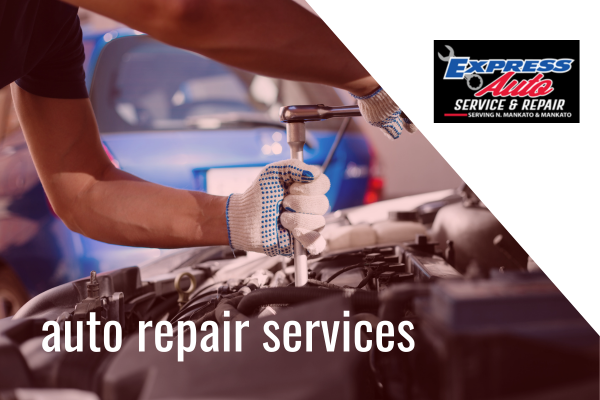Featured
When it concerns vehicle upkeep, tires are usually among the most forgotten parts, although they play an essential duty in the safety and efficiency of your automobile. Tire turning and alignment are 2 vital solutions that aid ensure your tires use equally, last much longer, and continue to carry out at their best. Here's whatever you require to learn about tire rotation and alignment and why they matter for your car.
What Is Tire Turning? Tire turning is the process of relocating the tires from one setting to another to ensure even put on across all four tires. The front and rear tires of a car wear at various rates as a result of the weight circulation and the truth that the front tires manage both steering and braking. By rotating the tires on a regular basis, normally every 6,000 to 8,000 miles, you can cancel the wear and expand the life of your tires.
In most vehicles, the tires will certainly be revolved from front to back, and sometimes, side-to-side, depending on the tire type and your car's specifications. This makes certain that each tire bears an equivalent quantity of anxiety and strain. Normal tire turnings additionally boost vehicle handling and ride quality, as well as add to much better gas performance.
What Is Tire Alignment? Tire alignment describes changing the angles of your vehicle's wheels to ensure they are located appropriately according to the supplier's specs. Correct placement ensures that your tires are alongside each other and vertical to the ground, which assists enhance the overall handling, stability, and life-span of your tires.
There are three essential aspects of alignment:
Camber: The tilt of the wheels when viewed from the front. If the wheels lean inward or external, it can create unequal tire wear. Wheel: The angle of the steering axis when seen from the side. Correct wheel alignment ensures steady guiding and much better car control. Toe: The angle at which the tires point internal or outward when watched from above. Inaccurate toe placement can cause tires to wear erratically and affect dealing with. Misalignment can take place as a result of variables like striking pits, curbs, or driving over harsh terrain, and even routine driving in time can progressively cause imbalance. Obtaining a placement check every 1-2 years or when you observe dealing with problems is necessary for optimal tire performance.
Why Are Tire Rotation and Alignment Important? Maximized Tire Life:. Tire turning makes sure also use across all 4 tires, preventing premature tire replacement. Misaligned tires use erratically, which can result in the need for even more regular tire replacements. Both tire rotation and positioning raise the life expectancy of your tires, saving you money in the future.
Improved Safety:. Proper alignment aids keep your lorry tracking right, enhancing security and handling. Misaligned tires can lead to pulling, that makes it harder to manage your automobile, particularly at high rates or in emergency situations. Tire turning also ensures your vehicle's handling continues to be consistent, boosting your capability to stop rapidly and preserve control.
Better Fuel Performance:. When your tires are appropriately aligned, they experience less moving resistance, meaning your engine doesn't need to work as tough to relocate the cars and truck. This lowers gas consumption and boosts gas mileage. Imbalance can create your tires to drag, causing inadequate gas performance.
Smoother Trip:. Misaligned or unevenly used tires can trigger vibrations in the steering wheel or vehicle body, which can be uncomfortable while driving. Regular tire rotation and placement can supply a smoother and quieter experience, lowering unnecessary sound and vibrations.
Indications You Required Tire Turning or Positioning. It is essential to be conscious of advising indicators that your tires might require attention. Maintain an eye out for:
Unequal Tire Put On: If you see that tire is extra used than others, maybe an indicator that it's time for a rotation or positioning. Steering Drawing to One Side: If your vehicle pulls to one side, especially when you're driving directly, it could show imbalance. Resonances or Unusual Sounds: If your steering wheel trembles or you listen to a buzzing or whimpering noise, your alignment might be off. Screeching Tires: A piercing screech can signal misalignment or that your tires are used unevenly. If you notice any one of these indications, it's a good idea to have your lorry checked as quickly as possible to protect against more damages to your tires or suspension system.
Just How Typically Should You Turn and Align Your Tires? Tire rotation is generally suggested every 6,000 to 8,000 miles or every six months, depending on your vehicle's manual and driving problems. It's likewise a great concept to rotate your tires during oil modifications to make certain they obtain the focus they need.
For alignment, a lot of experts recommend having your tires straightened once a year or if you observe any taking care of issues. If you have actually lately struck a hole, visual, or another challenge, it's a great concept to have your alignment checked quicker to prevent uneven tire wear.

Verdict: Maintain Your Tires for Long Life and Safety. Tire rotation and positioning are simple yet essential aspects of automobile upkeep that contribute to longer tire life, boosted safety, and better gas efficiency. By following the recommended solution intervals for tire rotation and positioning, you can guarantee your tires remain in leading condition, giving a smoother and much safer driving experience. Routine upkeep assists you avoid unanticipated tire wear, pricey repair services, and possible crashes, making it a smart financial investment for your car's total performance.
Latest Posts
Commemorate Life's Minutes at Deauville Inn
A Trip Through Time at the Deauville Inn
Change Your Space with Tailored Bathroom and Shower Elegance